Environmentally Degraded Mining Areas of Eastern Slovakia As a Potential Object of Geotourism
Abstract
1. Introduction
2. Geographical, Geological, and Historical Setting of the Examined Territory
- Site 1—Markušovce tailing pond
- Stage of the “old tailing pond”
- 2.
- “Middle section” stage
- 3.
- The “poor packaging” stage
- Site 2—Zabíjanec heap
- Site 3—Pätoracké heap
- Site 4—Slovinky Tailing Pond
3. Materials and Methods
3.1. Sediment Sampling
3.2. Public Opinion Poll
- Did you have sufficient information about the mining history of this region before the visit?
- (1a) Yes, I had detailed information
- (1b) I had only basic information
- (1c) No, I had no information
- Can you define the concept of mining tailing ponds and mining heaps as mountain relief forms?
- (2a) Yes, I can
- (2b) No, I cannot
- Have you ever visited other regions with mining and industrial remnants including tailing ponds and heaps?
- (3a) Yes, several times
- (3b) Yes, once
- (3c) No, never
- What is the visual impact of Slovinky and Markušovce tailing ponds and of mining heaps in Rudňany?
- (4a) Negative and depressive, a foreign element in the landscape
- (4b) Normal, natural part of the landscape after an intensive mining and processing activity
- (4c) Positive, an interesting anthropogenic element
- Evaluate the safety of these sites—Slovinky tailing pond
- (5a) Satisfactory condition
- (5b) Unsatisfactory condition
- (5c) Disastrous condition
- Evaluate the safety of these sites—Markušovce tailing pond
- (6a) Satisfactory condition
- (6b) Unsatisfactory condition
- (6c) Disastrous condition
- Evaluate the safety of these sites—mining heaps Rudňany
- (7a) Satisfactory condition
- (7b) Unsatisfactory condition
- (7c) Disastrous condition
- In your opinion, what impact do these sites have on the state of the environment and human and animal health?
- (8a) Very negative
- (8b) Slightly negative
- (8c) Neither negative nor positive
- What is the primary task of the competent authorities/persons in relation to these sites?
- (9a) Ensure regular monitoring of the territory
- (9b) Transfer of ownership from private to state hands
- (9c) Use in geotourism, together with other objects after the former mining activity
- (9d) Use in educational process in schools
- (9e) Remediation of damaged parts and gradual reclamation
- (9f) Further processing of material in the tailing pond, extraction of precious metals (Au, Ag)
- (9g) Prevent uncontrolled visits to these sites
- (9h) Remove illegal dwellings within the reach of such sites
- Are these sites suitable for geotourism and education in schools?
- (10a) Yes, they are
- (10b) No, they are not
- Would it be appropriate to build orientation and information boards at these sites?
- (11a) Yes
- (11b) No
- Would it be suitable to mark a hiking trail leading to these sites?
- (12a) Yes
- (12b) No
- Would it be suitable to have a tourist guide in these sites?
- (13a) Yes
- (13b) No
- Would you suggest to include these sites as part of the so-called mining route?
- (14a) Yes
- (14b) No
- Using these sites in the educational process, should they be included in:
- (15a) Geography
- (15b) Environmental study
- (15c) History
- Using these sites in the educational process, what would you prefer:
- (16a) Present them in classes at school
- (16b) Present them directly on the spot
4. Results
4.1. Analysis of the Heavy Metal Content
4.2. Public Opinion Poll
5. Discussion
- Coordination of tourism entities with the involvement of sludge ponds in the tourism offer at national and international levels;
- Advertising campaigns—publishing promotional materials, participation in tourism fairs, workshops, website creation, etc.;
- Provision of traffic and tourist signs—information boards, marking the tourist destinations and trails on highways and roads, etc.;
- Creation of a symbol, brand, or logo of sludge as a specific object of geotourism production of souvenirs, cooperation with artists, producers of art objects by art schools, competitions;
- Roads, parking lots, and sanitary facilities construction and treatment—analysis of the infrastructure construction and its impact on tourism development, especially in terms of transport accessibility of sludge ponds;
- Restoration, maintenance, and use of historical monuments in the area of sludge ponds—e.g., maintenance of mining equipment;
- Organization of educational and cognitive events in the area of sludge ponds—for school groups, professionals, the general public;
- The use of new information technologies in the supply and distribution of geotourism products—monitoring the development trends, cooperation with entities that provide services and products in the field of informatization of society;
- Improving accommodation and catering capacities in the vicinity of sludge ponds—support the providers of accommodation and catering services in the region while promoting their facilities, etc.;
- Education of experts in geotourism with a focus on sludge ponds—to incorporate the topic into the teaching process at universities, etc.;
- Education of the population—support of activities aimed at a conscious relationship with the region, involvement of the local population in promotion, etc.;
- Ensuring the safety, health, and life protection of visitors—preventing contact of visitors with sediments of sludge (in the case of deposited materials with possible evolution of dust particles) by building wooden sidewalks, viewing platforms, and respiratory protection in windy weather, etc.
6. Conclusions
Author Contributions
Funding
Acknowledgments
Conflicts of Interest
References
- Čech, V.; Krokusová, J. Antropogénna Geomorfológia (Antropogénne Formy Reliéfu); University of Prešov: Prešov, Slovakia, 2013; p. 179. [Google Scholar]
- Kirchner, K.; Smolová, I. Základy Antropogenní Geomorfologie; Univerzita Palackého Olomouc: Olomouc, Czech Republic, 2010; p. 287. [Google Scholar]
- Szabó, J.; Lóránt, D.; Dénes, L. Anthropogenic Geomorphology—A Guide to Man-Made Landforms; Springer: Berlin/Heidelberg, Germany, 2010; p. 298. [Google Scholar]
- Zapletal, L. Úvod do Antropogenní Geomorfologie; Univerzita Palackého Olomouc: Olomouc, Czech Republic, 1969; pp. 1–320. [Google Scholar]
- Etigemane, H.; Muniswamy, D. Spatial Distribution of Heavy Metals around the Gold Mine Ore Tailings of Hatti, Karnataka State, India. Landsc. Environ. 2018, 11, 35–44. [Google Scholar] [CrossRef]
- Gutierrez, M.; Collette, Z.; Mcclanahan, A.; Mickus, K. Mobility of Metals in Sediments Contaminated with Historical Mining Wastes: Example from the Tri-State Mining District, USA. Soil Syst. 2019, 3, 22. [Google Scholar] [CrossRef]
- Hančuľák, J.; Bobro, M.; Šestionová, O.; Brehuv, J.; Slančo, P. Mercury in the environment of old mining areas of Rudňany and Mernik. Acta Montan. Slovaca 2006, 11, 295–299. [Google Scholar]
- Musilová, J.; Árvay, J.; Vollmannova, A.; Tóth, T.; Tomáš, J. Environmental Contamination by Heavy Metals in Region with Previous Mining Activity. In Proceedings of the 14th International Conference on Environmental Science and Technology, Rhodes, Greece, 3–5 September 2015. [Google Scholar]
- Wang, P.; Sun, Z.; Hu, Y.; Cheng, H. Leaching of heavy metals from abandoned mine tailings brought by precipitation and the associated environmental impact. Sci. Total Environ. 2019, 695. [Google Scholar] [CrossRef] [PubMed]
- Zhang, X.; Yang, L.; Li, Y.; Li, H.; Wang, W.; Ye, B. Impacts of lead/zinc mining and smelting on the environment and human health in China. Environ. Monit. Assess. 2011, 184, 2261–2273. [Google Scholar] [CrossRef] [PubMed]
- Demková, L.; Árvay, J.; Bobuľská, L.; Hauptvogl, M.; Hrstková, M. Open mining pits and heaps of waste material as the source of undesirable substances: Biomonitoring of air and soil pollution in former mining area (Dubnik, Slovakia). Environ. Sci. Pollut. Res. 2019, 26, 35227–35239. [Google Scholar] [CrossRef]
- Angelovičová, L.; Fazekašová, D. Contamination of the soil and water environment by heavy metals in the former mining area of Rudňany (Slovakia). Soil Water Res. 2014, 9, 18–24. [Google Scholar] [CrossRef]
- Bobro, M.; Maceková, J.; Slančo, P.; Hančuľák, J.; Šestinová, O. Wastes from mining and metallurgical activities in the water reservoir of Ružín. Acta Metall. Slovaca 2006, 12, 26–32. [Google Scholar]
- Concas, A.; Ardau, C.; Cristini, A.; Zuddas, P.; Cao, G. Mobility of heavy metals from tailings to stream waters in a mining activity contaminated site. Chemosphere 2006, 63, 244–253. [Google Scholar] [CrossRef]
- Demková, L.; Boguská, Z.; Fazekašová, D. Physico-chemical water properties and flora diversity under the old mining load influence (Rudnansky creek, Slovakia). Pollack Period. 2015, 10, 123–131. [Google Scholar]
- Gałuszka, A.; Migaszewski, Z.; Dołęgowska, S.; Michalik, A.; Duczmal-Czernikiewicz, A. Geochemical background of potentially toxic trace elements in soils of the historic copper mining area: A case study from Miedzianka Mt., Holy Cross Mountains, south-central Poland. Environ. Earth Sci. 2015, 74, 4589–4605. [Google Scholar] [CrossRef]
- García-Giménez, R.; Jiménez-Ballesta, R. Mine tailings influencing soil contamination by potentially toxic elements. Environ. Earth Sci. 2017, 76, 51. [Google Scholar] [CrossRef]
- Guo, X.L.; Gu, J.; Chen, Z.X.; Gao, H.; Qin, Q.J.; Sun, W.; Zhang, W.J. Effects of heavy metals pollution on soil microbial comunities metabolism and soil enzyme activities in coal mining area of Tongchuan, Shaanxi Province of Northwest China. Chin. J. Appl. Ecol. 2012, 23, 798–806. [Google Scholar]
- Li, Z.; Ma, Z.; Van Der Kuijp, T.J.; Yuan, Z.; Huang, L. A review of soil heavy metal pollution from mines in China: Pollution and health risk assessment. Sci. Total Environ. 2014, 468, 843–853. [Google Scholar] [CrossRef] [PubMed]
- Liu, H.; Probst, A.; Liao, B. Metal contamination of soils and crops affected by the Chenzhou lead/zinc mine spill (Hunan, China). Sci. Total Environ. 2005, 339, 153–166. [Google Scholar] [CrossRef] [PubMed]
- McGrath, S.P. Metal concentrations in sludges and soil from a long-term field trial. J. Agric. Sci. 1984, 103, 25–35. [Google Scholar] [CrossRef]
- Palanivel, T.M.; Victor, R. Contamination assessment of heavy metals in the soils of an abandoned copper mine in Lasail, Northern Oman. Int. J. Environ. Stud. 2020, 77, 432–446. [Google Scholar] [CrossRef]
- Pietrzykowski, M.; Antonkiewicz, J.; Gruba, P.; Pająk, M. Content of Zn, Cd and Pb in purple moor-grass in soils heavily contaminated with heavy metals around a zinc and lead ore tailing landfill. Open Chem. 2018, 16, 1143–1152. [Google Scholar] [CrossRef]
- Zawadzki, J.; Fabijańczyk, P. Geostatistical evaluation of lead and zinc concentration in soils of an old mining area with complex land management. Int. J. Environ. Sci. Technol. 2013, 10, 729–742. [Google Scholar] [CrossRef]
- Zhang, F.-P.; Li, C.; Tong, L.-G.; Yue, L.-X.; Li, P.; Ciren, Y.-J.; Cao, C.-G. Response of microbial characteristics to heavy metal pollution of mining soils in central Tibet, China. Appl. Soil Ecol. 2010, 45, 144–151. [Google Scholar] [CrossRef]
- Qu, J.; Ren, G.; Chen, B.; Fan, J.; Yong, E. Effects of lead and zinc mining contamination on bacterial community diversity and enzyme activities of vicinal cropland. Environ. Monit. Assess. 2011, 182, 597–606. [Google Scholar] [CrossRef] [PubMed]
- Schippers, A.; Jozsa, P.G.; Sand, W.; Kovacs, Z.M.; Jelea, M. Microbiological Pyrite Oxidation in a Mine Tailings Heap and Its Relevance to the Death of Vegetation. Geomicrobiol. J. 2000, 17, 151–162. [Google Scholar]
- Teper, E. Dust-particle migration around flotation tailings ponds: Pine needles as passive samplers. Environ. Monit. Assess. 2008, 154, 383–391. [Google Scholar] [CrossRef]
- Kicińska, A.J. Health risk to children exposed to Zn, Pb, and Fe in selected urban parks of the Silesian agglomeration. Hum. Ecol. Risk Assess. Int. J. 2016, 22, 1687–1695. [Google Scholar] [CrossRef]
- Obiora, S.C.; Chukwu, A.; Davies, T.C. Heavy metals and health risk assessment of arable soils and food crops around Pb–Zn mining localities in Enyigba, southeastern Nigeria. J. Afr. Earth Sci. 2016, 116, 182–189. [Google Scholar] [CrossRef]
- Chen, X.-W.; Wong, J.T.F.; Leung, A.O.-W.; Ng, C.W.-W.; Wong, M.H. Comparison of plant and bacterial communities between a subtropical landfill topsoil 15 years after restoration and a natural area. Waste Manag. 2017, 63, 49–57. [Google Scholar] [CrossRef] [PubMed]
- Gasidło, K. Problemy przekształceń terenów poprzemysłowych. Zesz. Nauk. Politech. Śląskiej Archit. 1998, 1408, 111–113. [Google Scholar]
- Jin, J.; Wang, R.; Li, F.; Huang, J.; Zhou, C.; Zhang, H.; Yang, W. Conjugate ecological restoration approach with a case study in Mentougou district, Beijing. Ecol. Complex. 2011, 8, 161–170. [Google Scholar] [CrossRef]
- Pełka-Gościniak, J. Restoring nature in mining areas of the Silesian Upland (Poland). Earth Surf. Process. Landforms 2006, 31, 1685–1691. [Google Scholar] [CrossRef]
- Koda, E.; Pachuta, K. Possibility of sanitary landfill rehabilitation with the use of self-growing plants. Ann. Wars. Agric. Univ. SGGW Land Reclam. 2001, 32, 41–50. [Google Scholar]
- Hose, T.A. Geotourism, or can Tourists become Casual Rock Hounds? In Geology on Your Doorstep; Bennett, M.R., Ed.; The Geological Society: London, UK, 1996; pp. 207–228. [Google Scholar]
- Buckley, R. Research Note Environmental Inputs and Outputs in Ecotourism: Geotourism with a Positive Triple Bottom Line? J. Ecotourism 2003, 2, 76–82. [Google Scholar] [CrossRef]
- Joyce, E.B. Geomorphological Sites and the New Geotourism in Australia; School of Earth Sciences, The University of Melbourne: Melbourne, Australia, 2006. [Google Scholar]
- Dowling, R.K. Geotourism’s global growth. Geoheritage 2011, 3, 1–13. [Google Scholar] [CrossRef]
- Dowling, R. Global Geotourism—An Emerging Form of Sustainable Tourism. Czech J. Tour. 2013, 2, 59–79. [Google Scholar] [CrossRef]
- Hose, T.A. The English Origins of Geotourism (as a Vehicle for Geoconservation) and Their Relevance to Current Studies. Acta Geogr. Slov. 2011, 51, 343–359. [Google Scholar] [CrossRef]
- Ólafsdóttir, R.; Tverijonaite, E. Geotourism: A Systematic Literature Review. Geosciences 2018, 8, 234. [Google Scholar] [CrossRef]
- Ruban, D.A. Geotourism—A geographical review of the literature. Tour. Manag. Perspect. 2015, 15, 1–15. [Google Scholar] [CrossRef]
- Goki, N.G.; Marcus, N.D.; Umbugadu, A.A. Preliminary assessment of the post-mining geotourism potential of the Plateau tin fields, Nigeria. Acta Geoturistica 2016, 7, 21–30. [Google Scholar]
- Rybár, P.; Štrba, L. Mining Tourism And Its Position In Relation To Other Forms Of Tourism. In Proceedings of the GEOTOUR 2016 Conference. International Conference on Geotourism, Mining Tourism, Sustainable Development, and Environmental Protection, 18–20 October 2016, Firenze; BIMET-CNR: Firenze, Italy, 2016; pp. 7–12. [Google Scholar]
- Conlin, M.V.; Jolliffe, L. Mining Heritage and Tourism: A Global Synthesis; Routledge Advances in Tourism; Routledge: New York, NY, USA, 2011. [Google Scholar]
- Długoński, A. Recreational development of old landfill: The case study of Górka Rogowska landfill in Łódźcity, Poland. Detritus 2018, 2, 155–162. [Google Scholar] [CrossRef]
- Kobylańska, M. Underground Track “St. Johannes” Mine & Tourist Route “By the traces of the former ore mining” in the Mirsk Commune as the example of post-mining relics’ management for geotourism. Acta Geoturistica 2013, 4, 32–38. [Google Scholar]
- Kršák, B. Cross-Border Project: Upper Hungarian Mining Route. Present Issues of Geotourism in Slovakia and Hungary; EuroScientia VZW: Wambeek, Belgium, 2011; pp. 7–16. [Google Scholar]
- Lopez, M.I.; Perez, L. Sustainable mining heritage tourism: Indicators and a methodological proposal for the former coal mining settlements of Lota and Coronel. EURE Rev. Latinoam. Estuidios Urbano Reg. 2013, 39, 199–231. [Google Scholar]
- Lorenc, M.W.; Janusz, M. How mining heritage can be used? Selected examples from Europe. CUPRUM 2013, 3, 17–32. [Google Scholar]
- Łukaszkiewicz, J.; Długoński, A.; Fortuna-Antoszkiewicz, B.; Wiśniewski, P. From the heap to the park—Reclamation and adaptation of degraded urban areas for recreational functions in Poland. Przegląd Nauk. Inżynieria Kształtowanie Sr. 2019, 28, 664–681. [Google Scholar] [CrossRef]
- Pérez-Álvarez, R.; Torres-Ortega, S.; Diaz-Simal, P.; Husillos-Rodríguez, R.; De Luis-Ruiz, J.M. Economic Valuation of Mining Heritage from a Recreational Approach: Application to the Case of El Soplao Cave in Spain (Geosite UR004). Sustainability 2016, 8, 185. [Google Scholar] [CrossRef]
- Mello, J.; Filo, I.; Havrila, M.; Ivan, P.; Ivanička, J.; Madarás, J.; Németh, Z.; Polák, M.; Pristaš, J.; Vozár, J.; et al. Geologická Mapa Slovenského Raja, Galmusu a Hornádskej Kotliny 1: 50 000; ŠGÚDŠ: Bratislava, Slovakia, 2000; Available online: https://www.worldcat.org/title/regionalne-geologicke-mapy-slovenska-150-000-geologicka-mapa-slovenskeho-raja-galmusu-a-hornadskej-kotliny-geological-map-of-the-slovensky-raj-galmus-mts-and-hornad-depression/oclc/55739876 (accessed on 10 April 2020).
- Mello, J.; Filo, I.; Havrila, M.; Ivan, P.; Ivanička, J.; Madarás, J.; Németh, Z.; Polák, M.; Pristaš, J.; Vozár, J.; et al. Vysvetlivky ku Geologickej Mape Slovenského Raja, Galmusu a Hornádskej Kotliny 1: 50 000; ŠGÚDŠ: Bratislava, Slovakia, 2000; p. 303. Available online: https://www.worldcat.org/title/vysvetlivky-ku-geologickej-mape-slovenskeko-raja-galmusu-a-hornadskej-kotliny-150-000/oclc/57531638 (accessed on 10 April 2020).
- Hiller, E.; Petrák, M.; Tóth, R.; Lalinská-Voleková, B.; Jurkovič, L.; Kucerova, G.; Radková, A.; Šottník, P.; Vozár, J. Geochemical and mineralogical characterization of a neutral, low-sulfide/high-carbonate tailings impoundment, Markušovce, eastern Slovakia. Environ. Sci. Pollut. Res. 2013, 20, 7627–7642. [Google Scholar] [CrossRef] [PubMed]
- Tóth, R.; Hiller, E.; Petrák, M.; Jurkovič, L.; Šottník, P.; Vozár, J.; Peťková, K. Odkaliská Markušovce a Slovinky—Aplikácia metodického postupu na hodnotenie odkaliskových sedimentov pochádzajúcich z úpravy rúd na modelových odkaliskách. Miner. Slovaca 2013, 45, 125–130. [Google Scholar]
- Klinda, J.; Mičík, T.; Némethová, M.; Slámková, M. Environmentálna Regionalizácia Slovenskej Republiky 2016; Ministerstvo Životného Prostredia Slovenskej Republiky: Bratislava, Slovakia, 2016; p. 134.
- Jančura, M. Záverečná Správa Geologicko-Prieskumnej Úlohy. Markušovce—Odkalisko, Prieskum Látkového Zloženia a Výpočet Zásob Vyhradeného Ložiska Markušovce—Odkalisko—Baryt; Rudohorská investičná spoločnosť: Spišská Nová Ves, Slovakia, 2004; p. 46. [Google Scholar]
- Steger, T.; Filčák, R. Articulating the Basis for Promoting Environmental Justice in Central and Eastern Europe. Environ. Justice 2008, 1, 49–53. [Google Scholar] [CrossRef]
- Antypas, A.; Cahn, C.; Filčák, R.; Steger, T. Linking environmental protection, health and human rights in the European Union: An argument in favour of environmental justice policy. Environ. Law Manag. 2008, 20, 8–21. [Google Scholar]
- Filčák, R. Environmental Justice and the Roma Settlements of Eastern Slovakia: Entitlements, Land and the Environmental Risks. Czech Sociol. Rev. 2012, 48, 537–562. [Google Scholar] [CrossRef]
- Cahn, C. It’s the Law: Local Official Responsible for Roma Slums; Local Governance Brief Policy Journal of the Local Government and Public Sector Reform Initiative: Budapest, Hungary, 2004.
- Filčák, R. Chudoba a Životné Prostredie: Prípad Marginalizovaných Rómskych Osád. Euractiv.sk Európska únia-portál o EÚ. 2004. Available online: https://euractiv.sk/section/rovnost-sanci/opinion/chudoba-a-zivotne-prostredie-pripad-marginalizovanych-roms/ (accessed on 22 April 2013).
- Švec, Š. Metodológia Vied o Výchove: Kvantitatívno-Scientické a Kvalitatívno-Humanitné Prístupy Vedukačnom Výskume; Iris: Bratislava, Slovakia, 1998; p. 300. [Google Scholar]
- Taylor-Powell, E. Questionnaire Design: Asking Questions with a Purpose; University of Wisconsin Extension: Madison, WI, USA, 1998; p. 18. [Google Scholar]
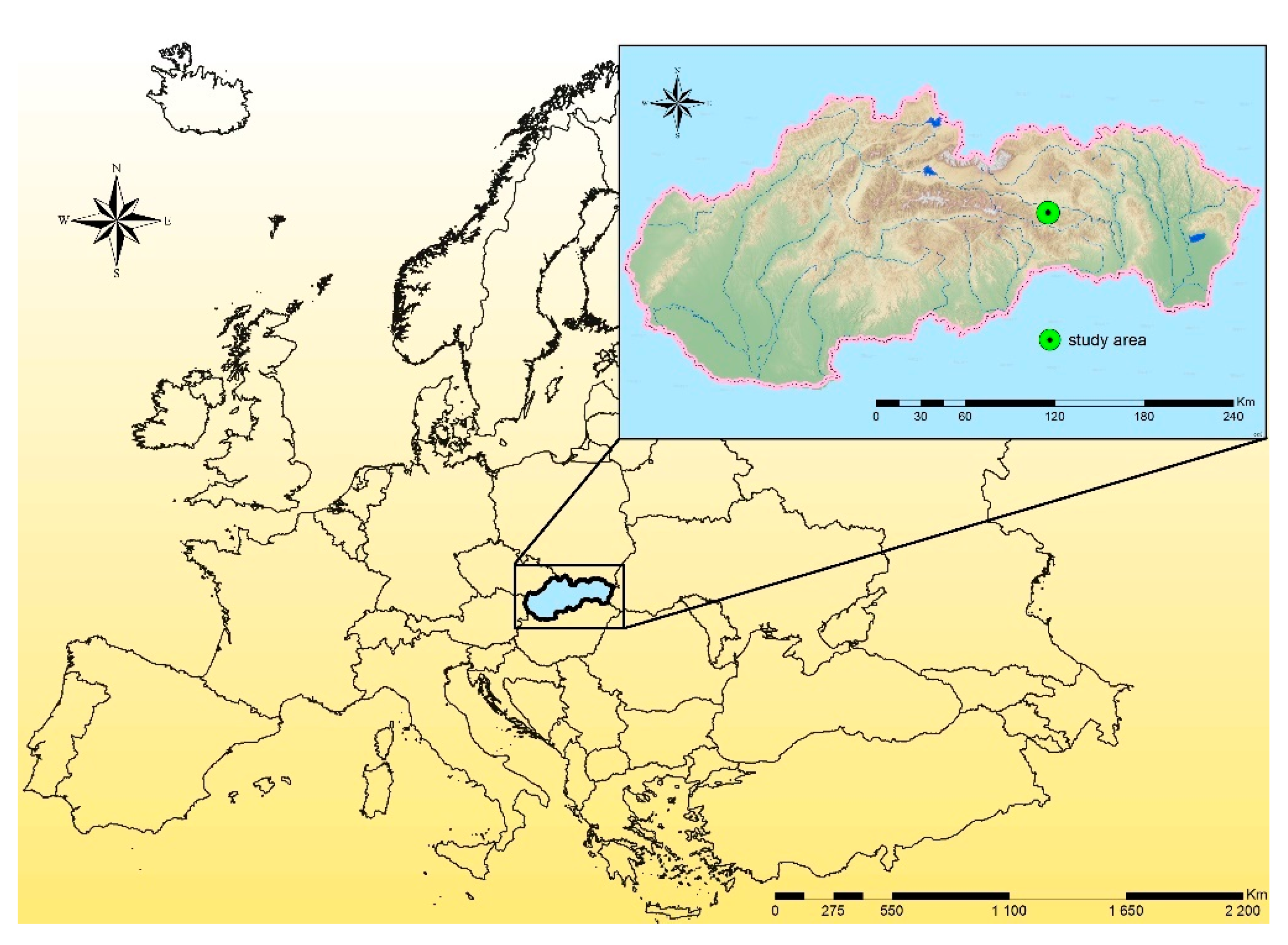
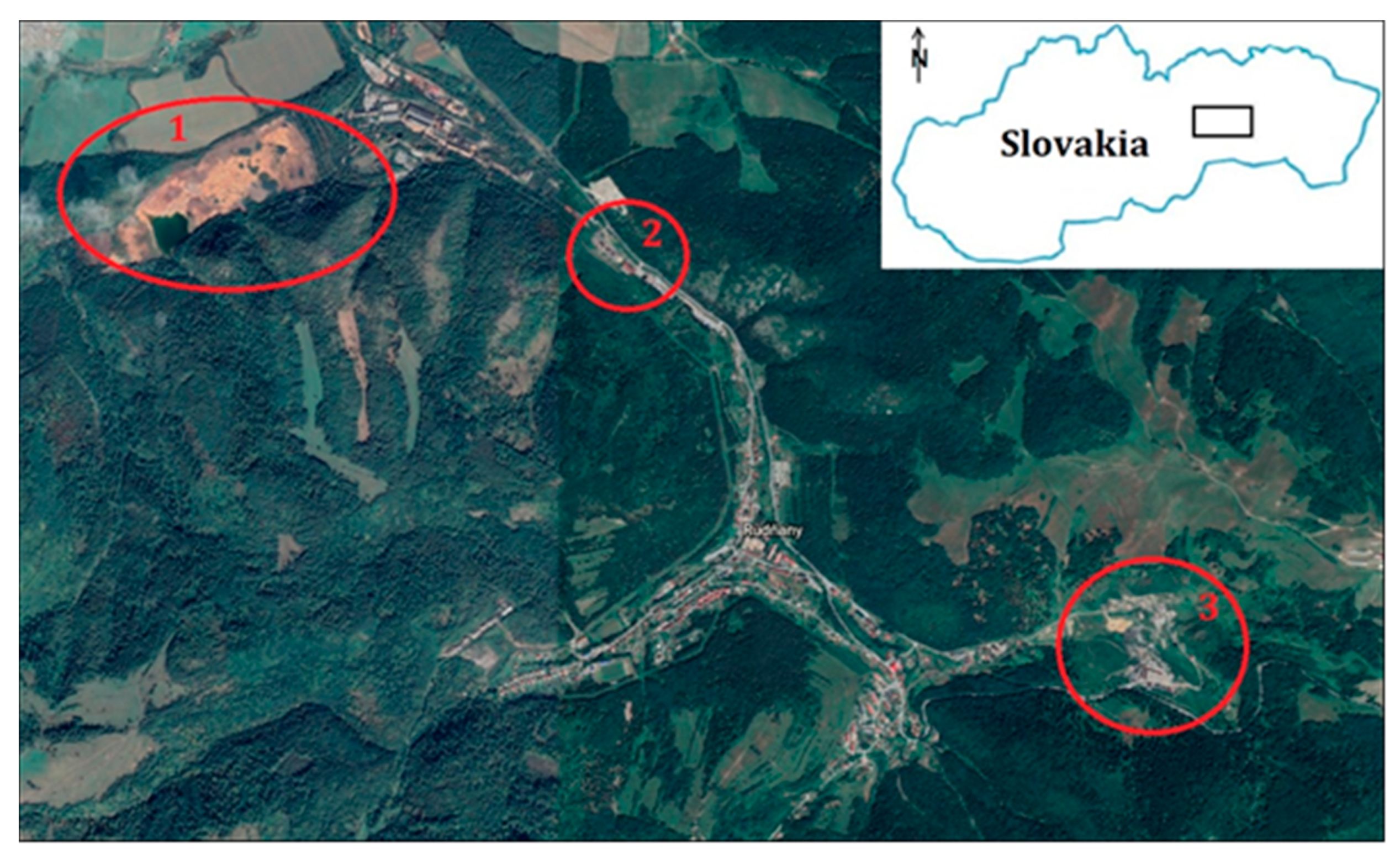


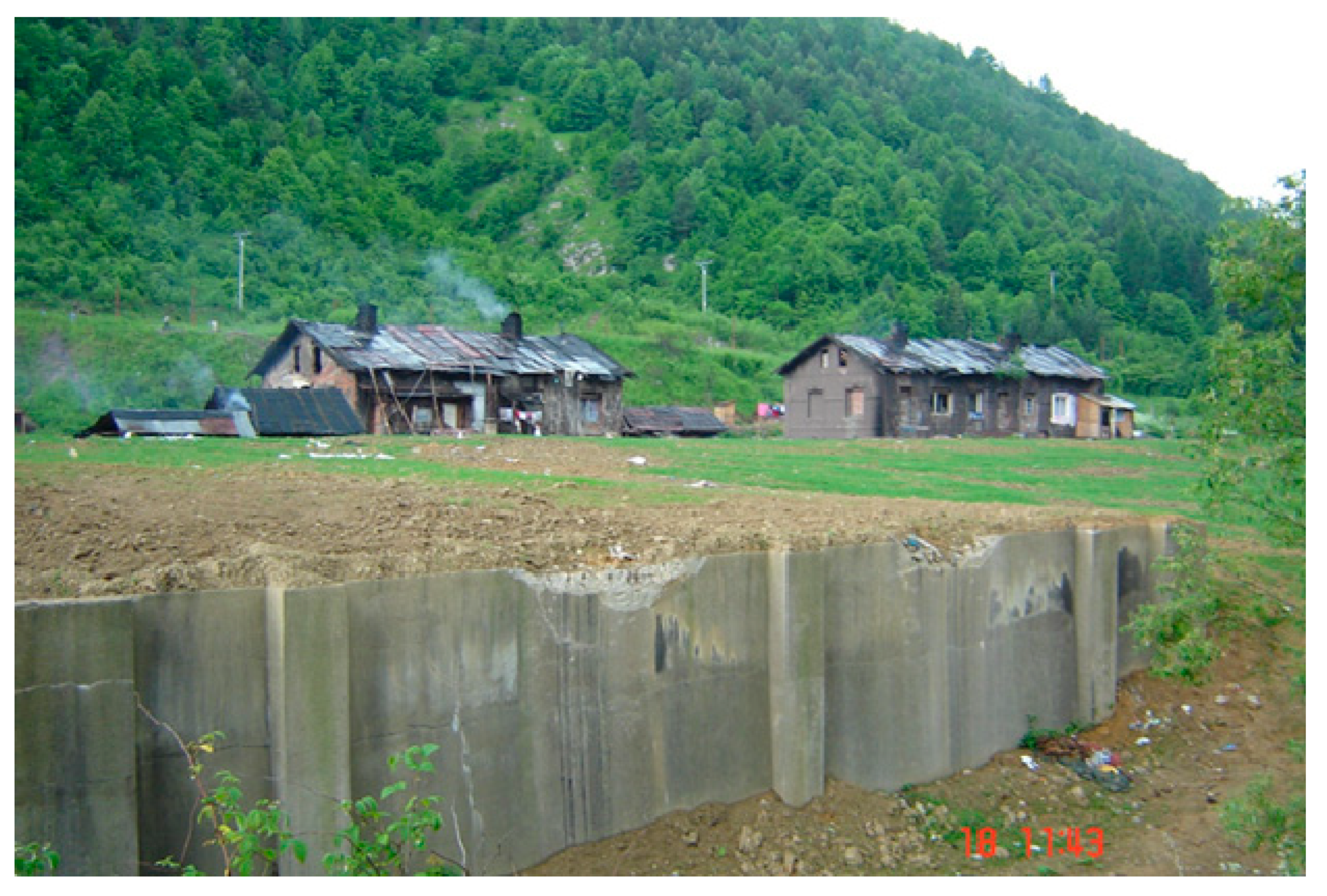
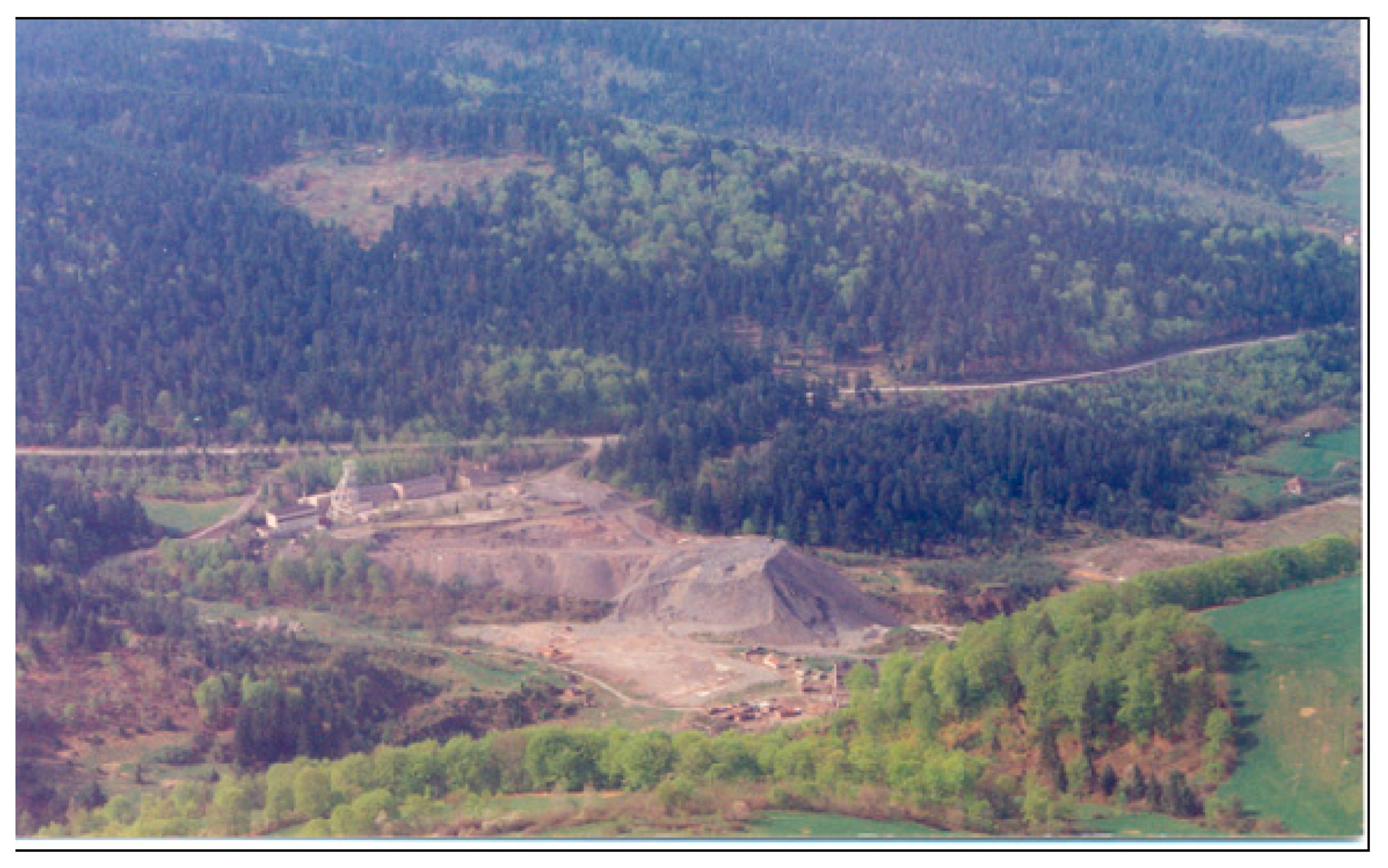
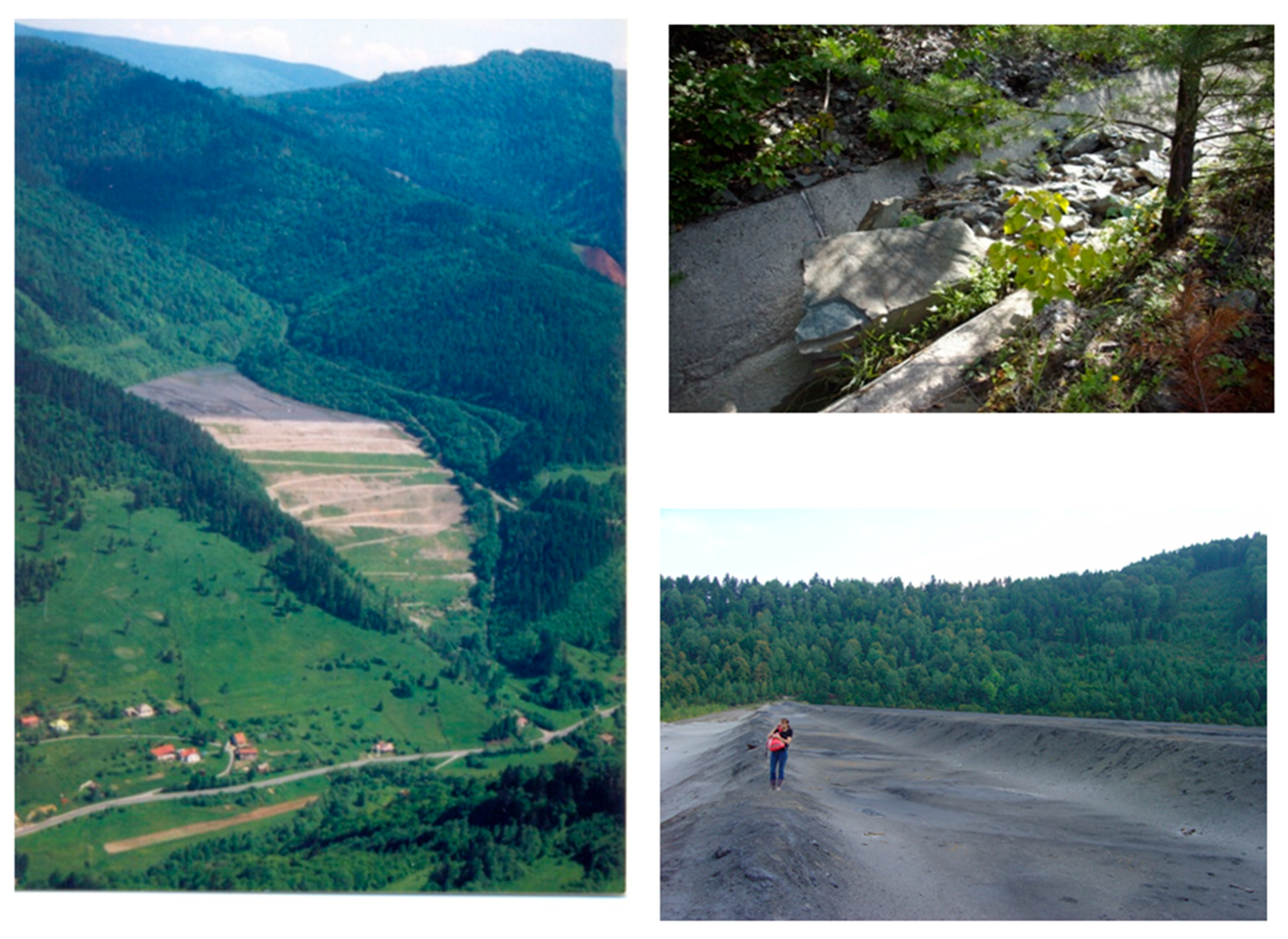
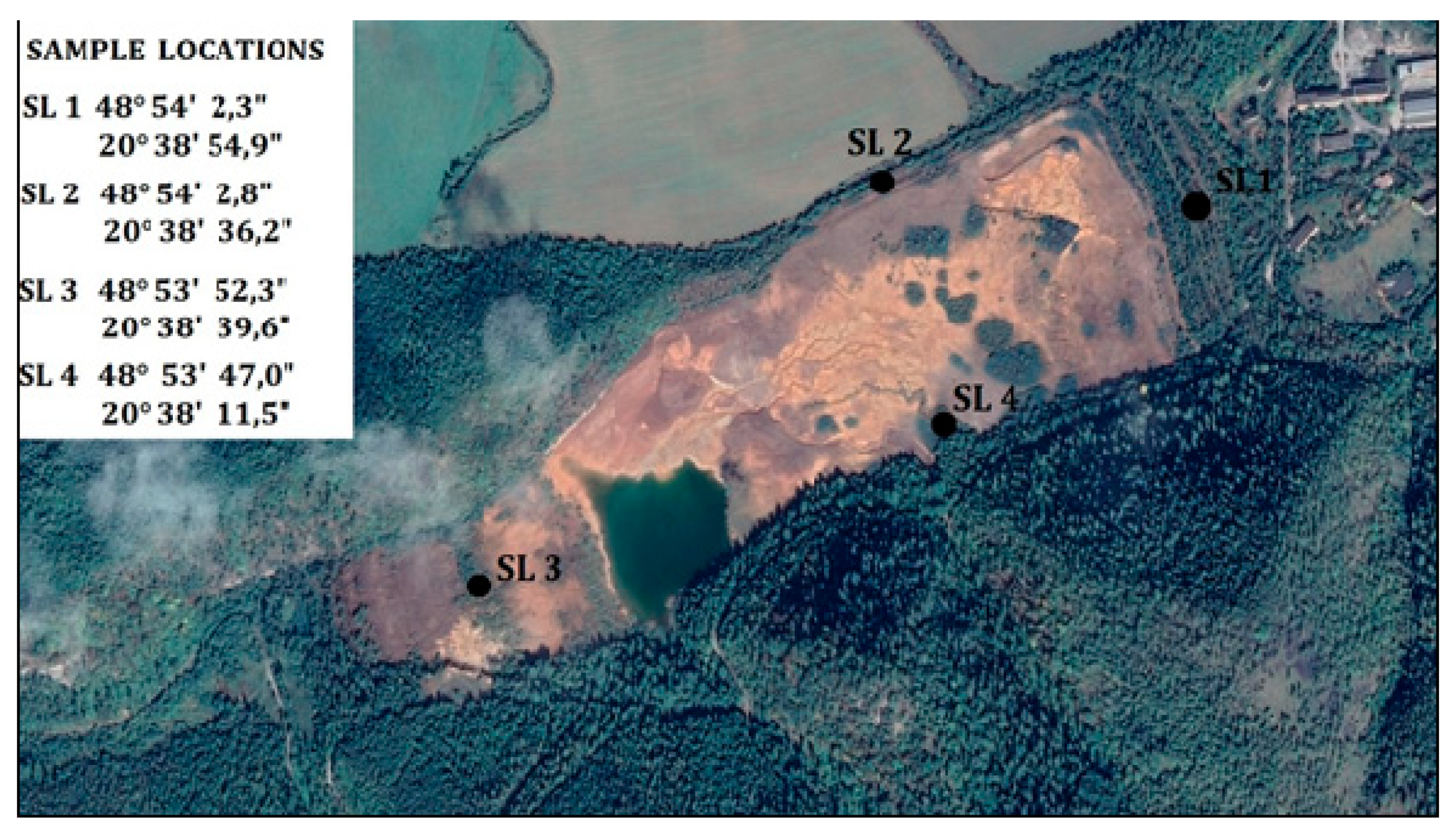
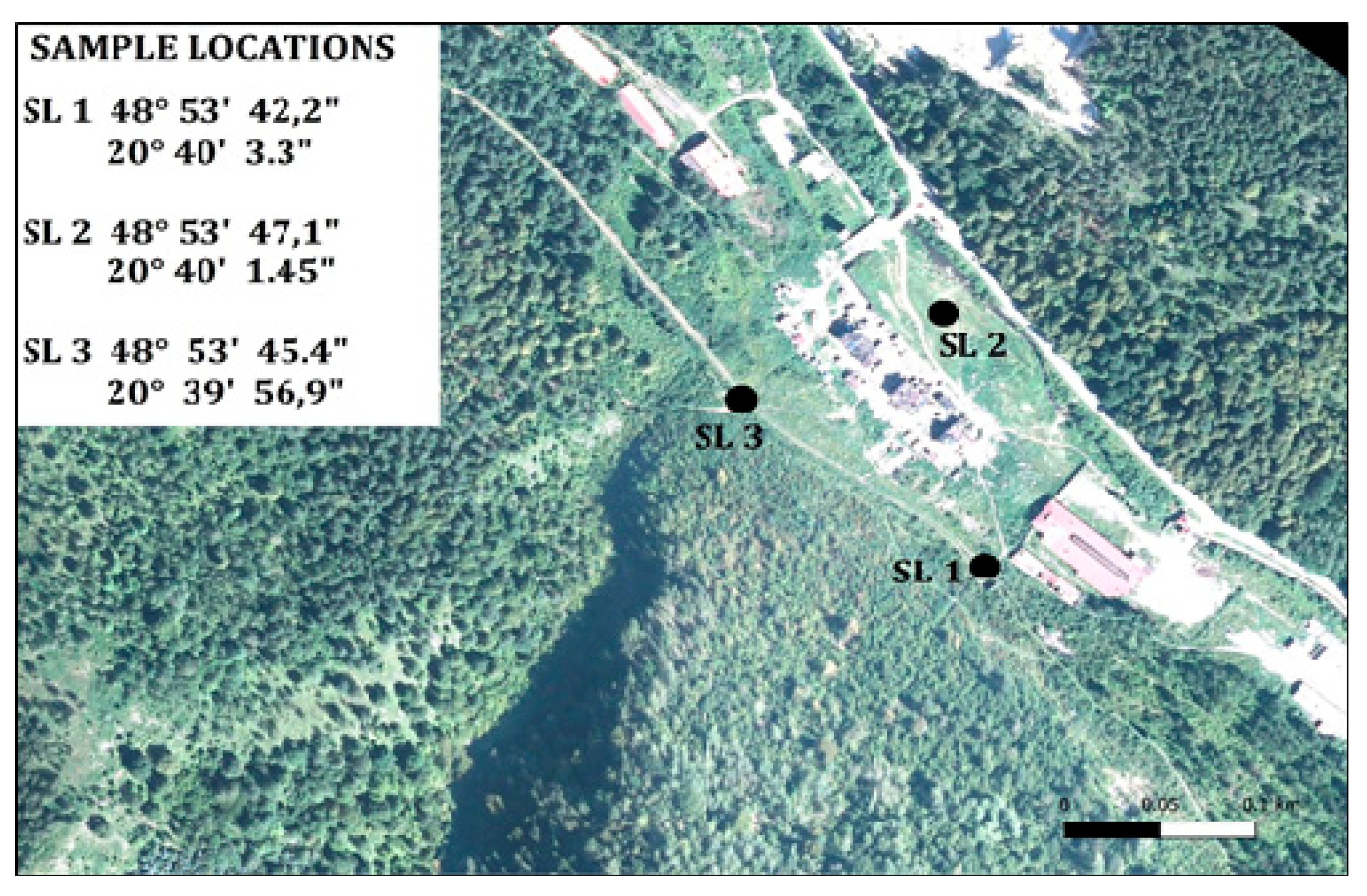
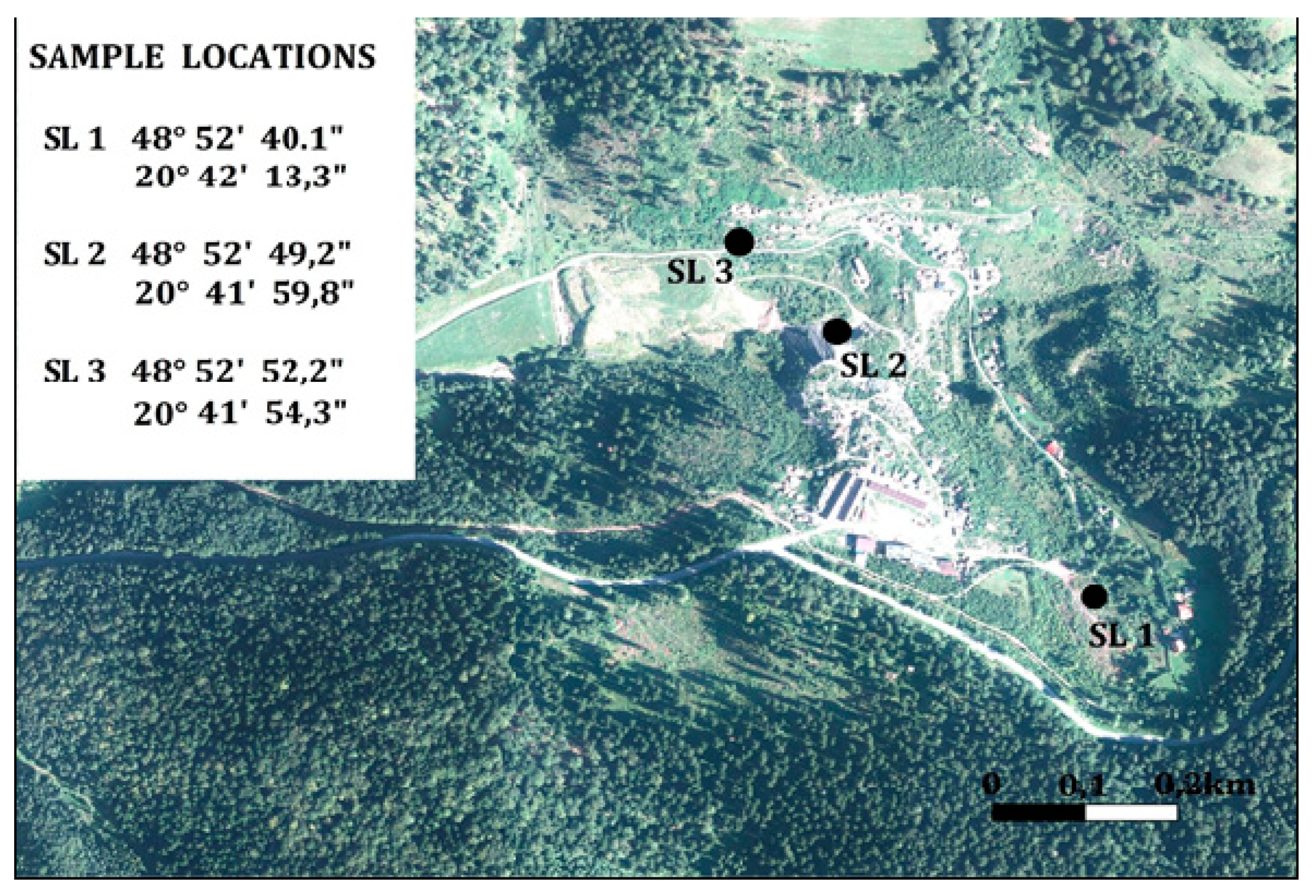
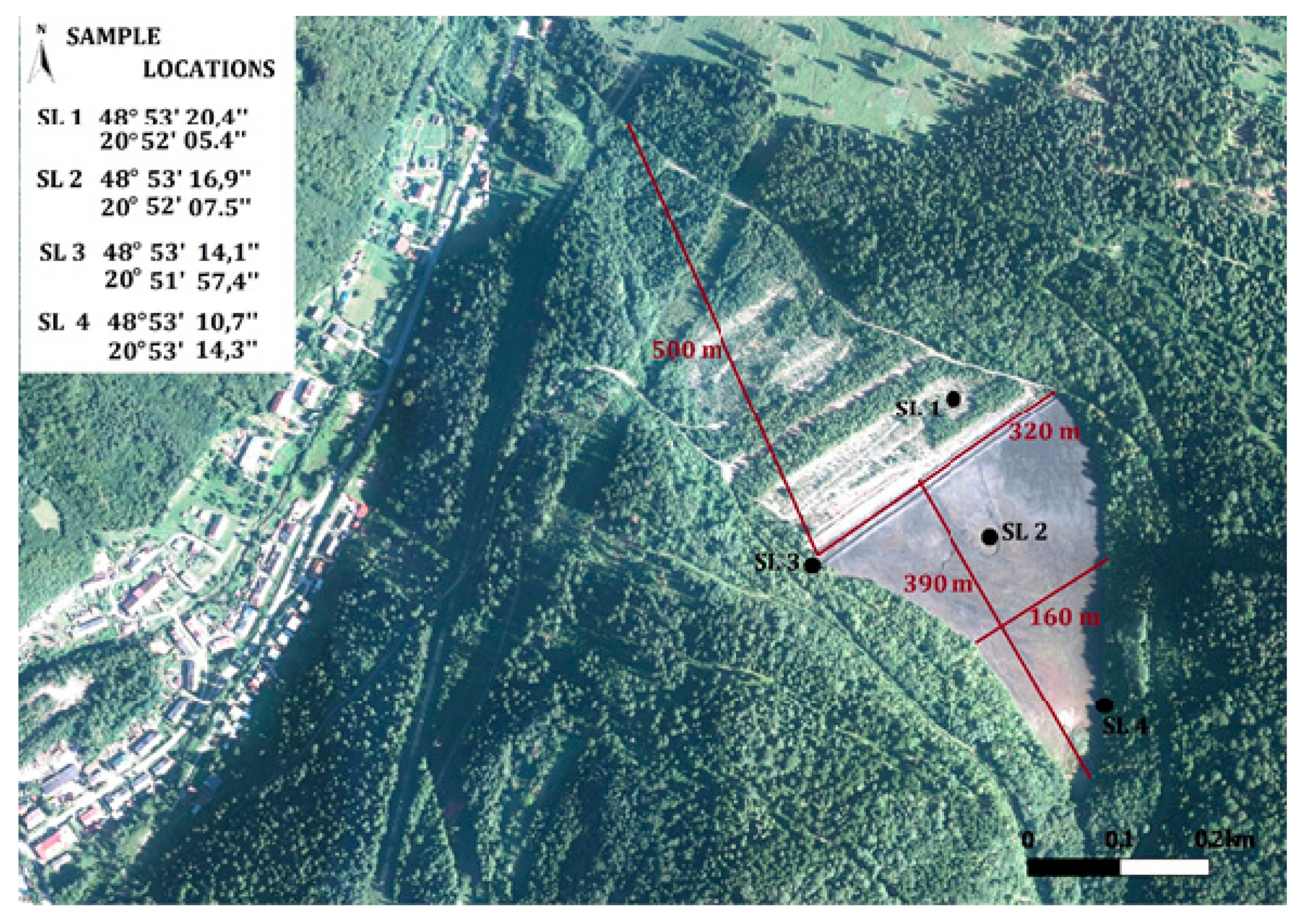




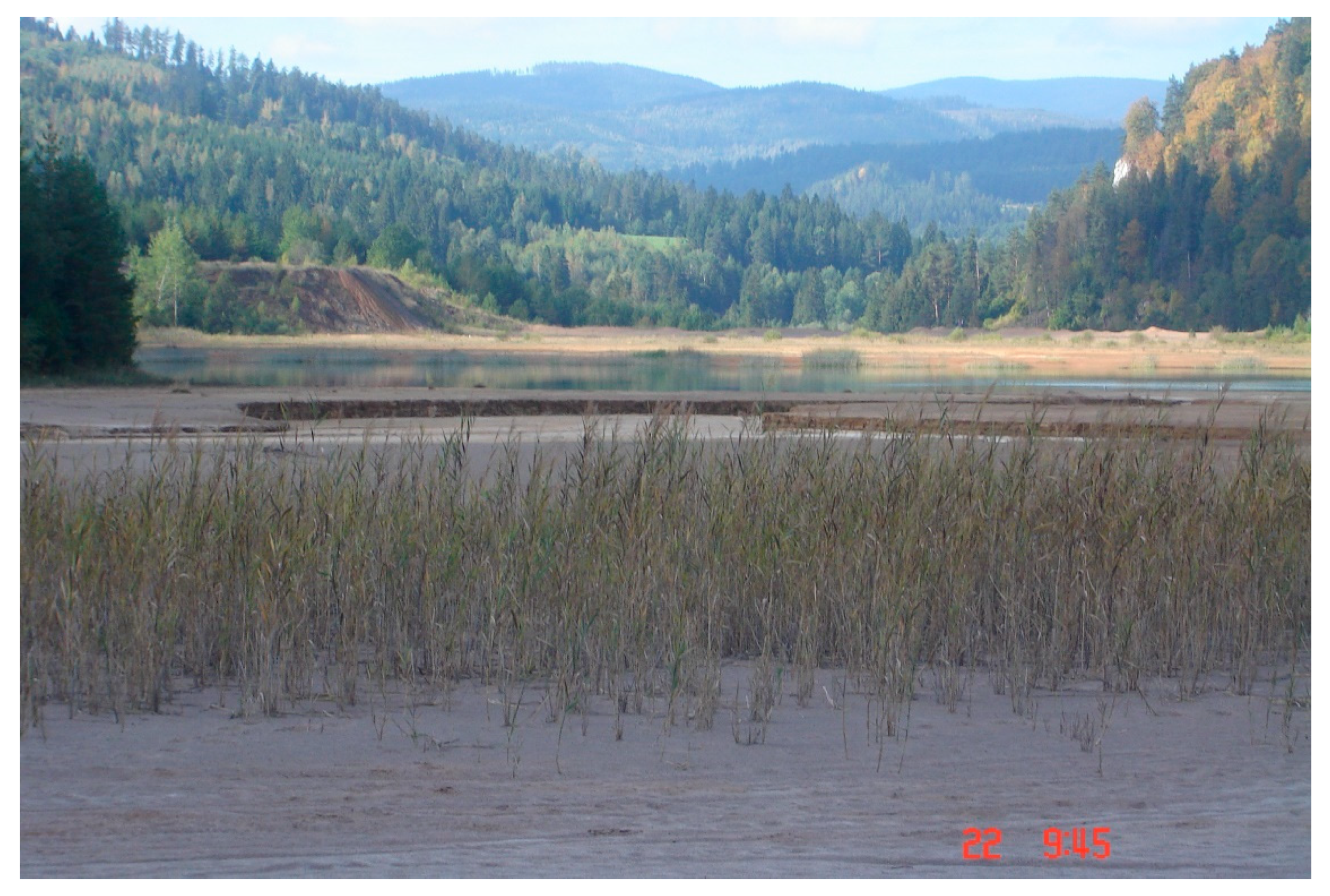
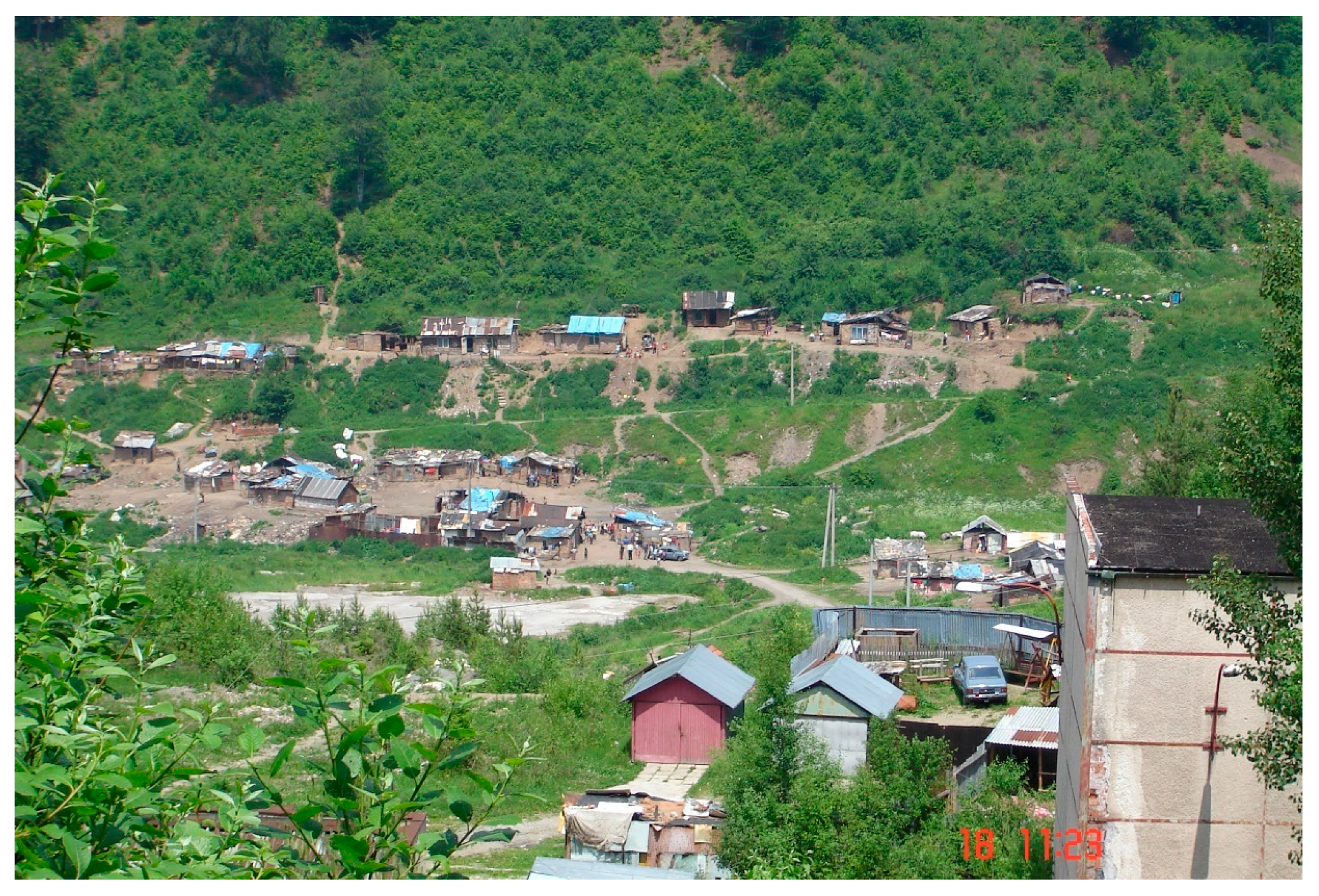
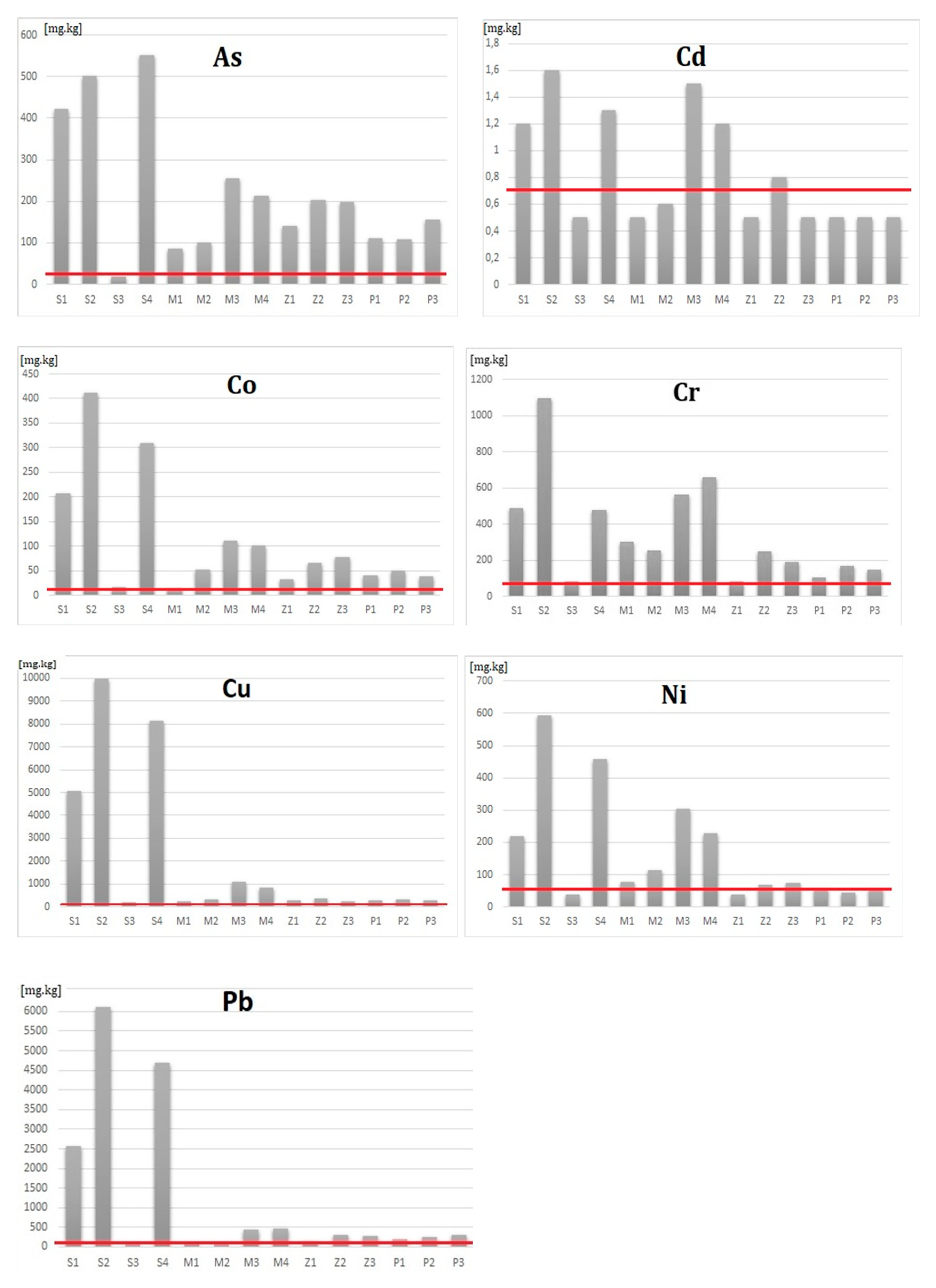
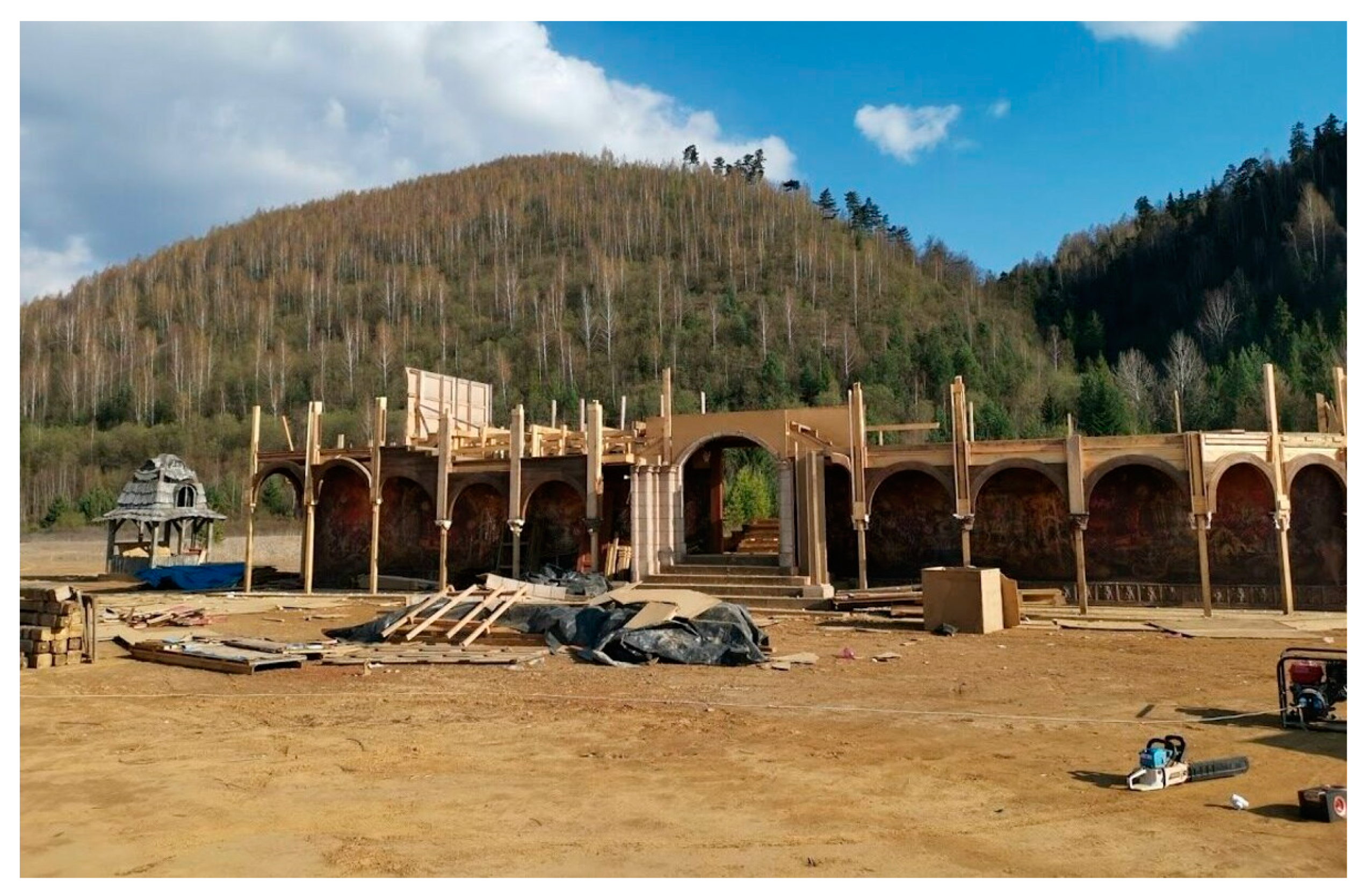
| Heavy Metal | Unit | SL 1 | SL 2 | SL 3 | SL 4 | Limit |
|---|---|---|---|---|---|---|
| Cu | (mg/kg) | 258 | 325 | 1096 | 852 | 60 |
| As | (mg/kg) | 85 | 102 | 256 | 213 | 25 |
| Cd | (mg/kg) | 0.5 | 0.6 | 1.5 | 1.2 | 0.7 |
| Pb | (mg/kg) | 89 | 59 | 449 | 475 | 70 |
| Ni | (mg/kg) | 77 | 112 | 303 | 228 | 50 |
| Cr | (mg/kg) | 302 | 256 | 563 | 658 | 70 |
| Co | (mg/kg) | 14 | 52 | 112 | 102 | 15 |
| Heavy Metal | Unit | SL 1 | SL 2 | SL 3 | Limit |
|---|---|---|---|---|---|
| Cu | (mg/kg) | 289 | 358 | 256 | 60 |
| As | (mg/kg) | 142 | 202 | 198 | 25 |
| Cd | (mg/kg) | < 0.5 | 0.8 | < 0.5 | 0.7 |
| Pb | (mg/kg) | 157 | 299 | 278 | 70 |
| Ni | (mg/kg) | 37 | 68 | 75 | 50 |
| Cr | (mg/kg) | 85 | 247 | 189 | 70 |
| Co | (mg/kg) | 32 | 66 | 78 | 15 |
| Heavy Metal | Unit | SL 1 | SL 2 | SL 3 | Limit |
|---|---|---|---|---|---|
| Cu | (mg/kg) | 277 | 329 | 298 | 60 |
| As | (mg/kg) | 112 | 109 | 156 | 25 |
| Cd | (mg/kg) | < 0.5 | < 0.5 | < 0.5 | 0.7 |
| Pb | (mg/kg) | 201 | 250 | 296 | 70 |
| Ni | (mg/kg) | 57 | 44 | 55 | 50 |
| Cr | (mg/kg) | 102 | 166 | 145 | 70 |
| Co | (mg/kg) | 41 | 50 | 38 | 15 |
| Heavy Metal | Unit | SL 1 | SL 2 | SL 3 | Limit |
|---|---|---|---|---|---|
| Cu | (mg/kg) | 277 | 329 | 298 | 60 |
| As | (mg/kg) | 112 | 109 | 156 | 25 |
| Cd | (mg/kg) | <0.5 | <0.5 | <0.5 | 0.7 |
| Pb | (mg/kg) | 201 | 250 | 296 | 70 |
| Ni | (mg/kg) | 57 | 44 | 55 | 50 |
| Cr | (mg/kg) | 102 | 166 | 145 | 70 |
| Co | (mg/kg) | 41 | 50 | 38 | 15 |
| Question Nr. | Answers | Percentage |
|---|---|---|
| 1 | a | 5 |
| b | 60 | |
| c | 35 | |
| 2 | a | 40 |
| b | 60 | |
| 3 | a | 23 |
| b | 35 | |
| c | 42 | |
| 4 | a | 76 |
| b | 20 | |
| c | 4 | |
| 5 | a | 2 |
| b | 44 | |
| c | 54 | |
| 6 | a | 21 |
| b | 66 | |
| c | 13 | |
| 7 | a | 8 |
| b | 52 | |
| c | 40 | |
| 8 | a | 56 |
| b | 27 | |
| c | 17 | |
| 9 | a | 22 |
| b | 8 | |
| c | 18 | |
| d | 20 | |
| e | 15 | |
| f | 5 | |
| g | 7 | |
| h | 5 | |
| 10 | a | 72 |
| b | 28 | |
| 11 | a | 62 |
| b | 38 | |
| 12 | a | 58 |
| b | 42 | |
| 13 | a | 68 |
| b | 32 | |
| 14 | a | 52 |
| b | 48 | |
| 15 | a | 71 |
| b | 22 | |
| c | 7 | |
| 16 | a | 28 |
| b | 72 |
© 2020 by the authors. Licensee MDPI, Basel, Switzerland. This article is an open access article distributed under the terms and conditions of the Creative Commons Attribution (CC BY) license (http://creativecommons.org/licenses/by/4.0/).
Share and Cite
Čech, V.; Gregorová, B.; Krokusová, J.; Košová, V.; Hronček, P.; Molokáč, M.; Hlaváčová, J. Environmentally Degraded Mining Areas of Eastern Slovakia As a Potential Object of Geotourism. Sustainability 2020, 12, 6029. https://doi.org/10.3390/su12156029
Čech V, Gregorová B, Krokusová J, Košová V, Hronček P, Molokáč M, Hlaváčová J. Environmentally Degraded Mining Areas of Eastern Slovakia As a Potential Object of Geotourism. Sustainability. 2020; 12(15):6029. https://doi.org/10.3390/su12156029
Chicago/Turabian StyleČech, Vladimír, Bohuslava Gregorová, Juliana Krokusová, Vladislava Košová, Pavel Hronček, Mário Molokáč, and Jana Hlaváčová. 2020. "Environmentally Degraded Mining Areas of Eastern Slovakia As a Potential Object of Geotourism" Sustainability 12, no. 15: 6029. https://doi.org/10.3390/su12156029
APA StyleČech, V., Gregorová, B., Krokusová, J., Košová, V., Hronček, P., Molokáč, M., & Hlaváčová, J. (2020). Environmentally Degraded Mining Areas of Eastern Slovakia As a Potential Object of Geotourism. Sustainability, 12(15), 6029. https://doi.org/10.3390/su12156029





